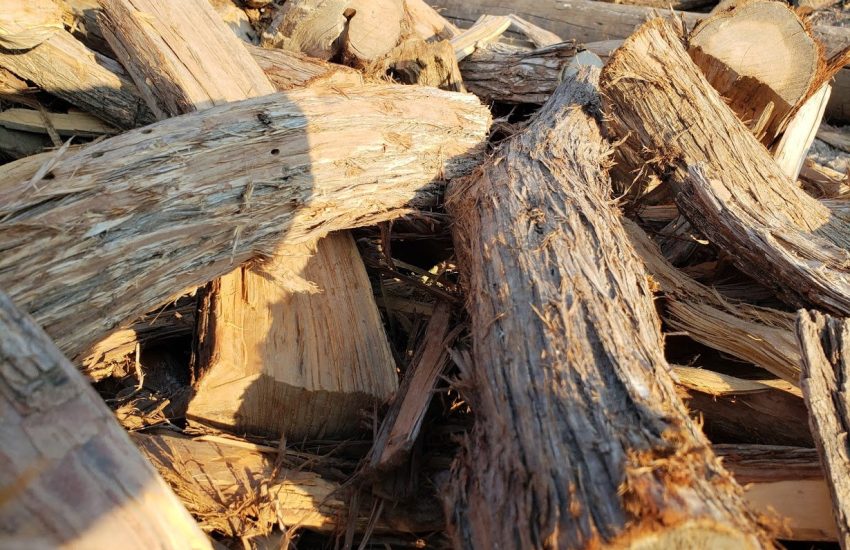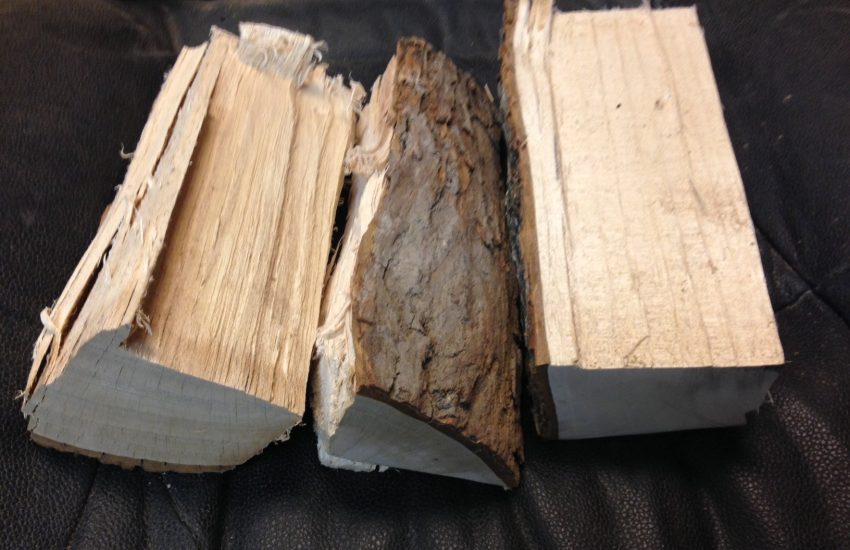Is Sassafras Good for Firewood/Burning
Sassafras is native to North America. White, red and silky sassafras can all be found in zones 4 to 9. These trees are quite cold-hardy and offer beautiful fall foliage. They contain a strong sap that offers a lot of flavor; if you like root beer, you will love the scent of sassafras.

Sassafras trees are also a source of food for many wildlife. If your woodlot contains sassafras and you enjoy or offer deer hunting on your land, make sure to keep a stand of sassafras in place to offer deer plenty of food in winter.
Heat Output and Efficiency (in BTUs)
Sassafras burns hot and fast. From a cord of it, you can’t expect BTUs higher than the low 20s. Because this wood burns so quickly, you will be reloading your fireplace or your stove repeatedly to enjoy a steady burn if all you’re burning is sassafras.
Creosote Buildup
Sassafras does contain a lot of sap, which helps the wonderful aroma of this firewood. For a cleaner burn, you may want to use sassafras for kindling and pair it with a harder wood, such as oak, for more heat at the end of the burn to clear away any ash that may be clinging to your chimney.
This wood tends to spit and spark a lot. If you burn large pieces of sassafras, you will need to keep your fireplace doors closed. To avoid a sooty, smoky burn without enough oxygen, keep the sassafras pieces small and when they are burned away, open up the fireplace to allow plenty of oxygen so the fire will draft well.
Before burning season, get your chimney checked and get any ash on the liner cleaned away. Removing this before it hardens in the next burning season can save you a lot of expense and mess.
Amount of Smoke, Spark and Coal Product
Sassafras is low smoke but very high odor. Because of the oil content in this wood, it is prone to spitting and sparking. Once it’s burned away, it will leave ash but not much of a coal bed.
If you’re burning large pieces of sassafras, keep your fireplace doors closed. If you’re burning it in a woodstove, it can be dangerous to open the stove to reload when sassafras is in there popping away. Before you load this wood, split it small and mix it with other woods to avoid a noisy fire with a lot of popping and sparking.
It should be noted that this wood is not recommended for cooking. While sassafras smells wonderful while burning, it can trigger an allergic response among some people. If you want a fire that smells yummy and that you can grill or smoke food over, consider using apple or cherry wood instead of sassafras.
How Long Will You Need to Season Sassafras Firewood?
Sassafras seasons quickly; once the rounds are split, your sassafras will be ready to burn in only about three months. This firewood splits quite easily whether seasoned or freshly cut.
Do consider taking sassafras down to very small pieces. Again, this is not a great banking wood. It can also be dangerous to cook over; while sensitivity to it is rare, there is a chance to those near the fire can have an allergic reaction to the burning oil. If anyone in your house has a problem with asthma or other breathing allergies, get a small amount and do a test fire before you buy a large amount of sassafras firewood.
This is an ideal wood to split small and put low in your burn stack to act as kindling. It will make your fire smell wonderful and burn away completely, firing up the larger pieces above it for a quieter, less sparky burn as the fire matures. If you have an elm or cottonwood that is producing an unpleasant odor and don’t mind keeping the fireplace glass closed, you can combat any nasty odors by interspersing the fire with small sticks of sassafras. Just be aware that each small piece of sassafras can produce a big pop without warning; try not to fiddle with the fire once it’s going.
If you have a kindling bucket or basket, these small pieces of wood will scent your home even without burning. This is also a very pretty wood to keep in open display in a metal bucket or a basket far from the fire.
Is Sassafras Firewood Expensive?
Because sassafras has so many other purposes, it can be pricey to use as your primary firewood. Of course, if you have sassafras in your own woodlot, you can harvest these trees slowly and cut them small enough to use as your primary kindling, keeping the costs down.
Sassafras is pretty enough to be used as an ornamental wood. The grain is quite straight and you may have folks in your region who use the harvested wood for the sap to use in perfumes and even food production. If you own a woodlot that contains enough sassafras to harvest, you may actually earn more selling this wood to craftsman for ornamental use.
For those who own their own woodlot and want to sell unharvested wood to herbalists and natural product makers, let the big trees grow. Soap and perfume makers will be able to harvest the tiny trees that crop up around your woodlot for the roots for their sassafras projects.
If you’re buying sassafras firewood from another woodsman, be ready to pay for the pleasure. You may be better off getting a half cord or a face cord and splitting this down to use strictly for kindling. Sassafras has a strong, straight grain and holds its shape well as it seasons.
Pros and Cons of using Sassafras for Burning
Pros:
- Sassafras is beautiful, both plain and while burning
- This wood also smells terrific, both burning and waiting to be burned
- Sassafras is easy to split and quick to season
Cons:
- Sassafras will be expensive; there is competition because this wood has so many other uses
- This will produce a great deal of popping and noise
- You will quickly be dealing with ash. Sassafras doesn’t produce an effective coal bed
How Sassafras Firewood Compares to Other Trees
Sassafras trees are quite beautiful in the landscape and offers a great benefit to local wildlife. Unlike trees that are green in the summer and yellow or brown in the fall, you may actually miss your nearest sassafras tree when it’s been taken down.
When stacking and seasoning your firewood, sassafras will season much quicker than wood such as elm. You can also split sassafras wet or dry, unlike cottonwood. Like birch, sassafras is quite pretty on the grate before you start your fire. Unlike birch, sassafras is not prone to mold growth under the bark.
Unlike cottonwood, elm and alder, sassafras will likely cost more. While these types of firewood produce about the same BTUs, you should expect to pay more for sassafras. To keep costs down, buy a smaller stack of sassafras and hold onto it just for kindling or just for nights when you want a pretty fireplace fire or a firepit party in the back yard.


